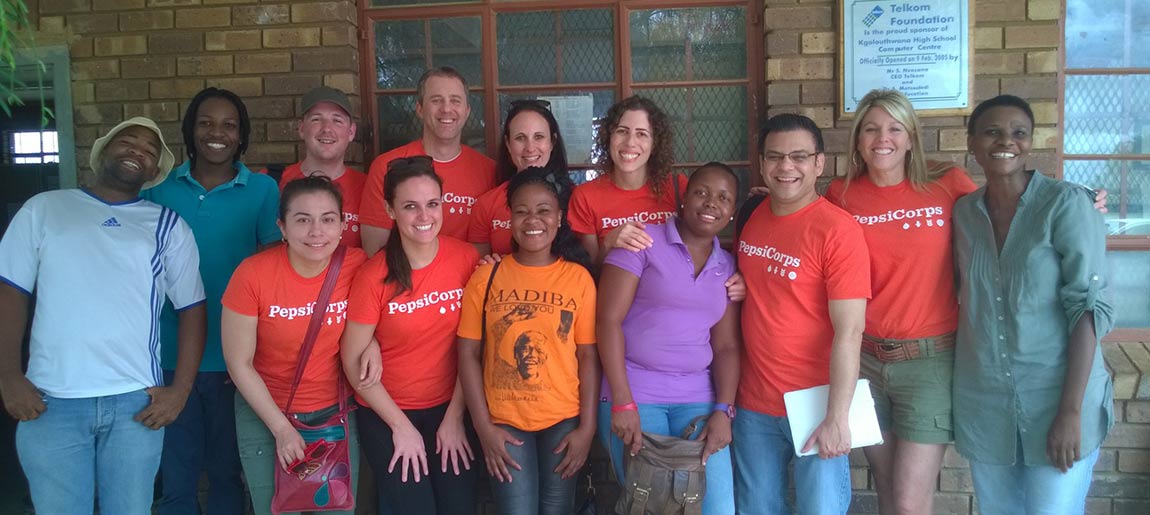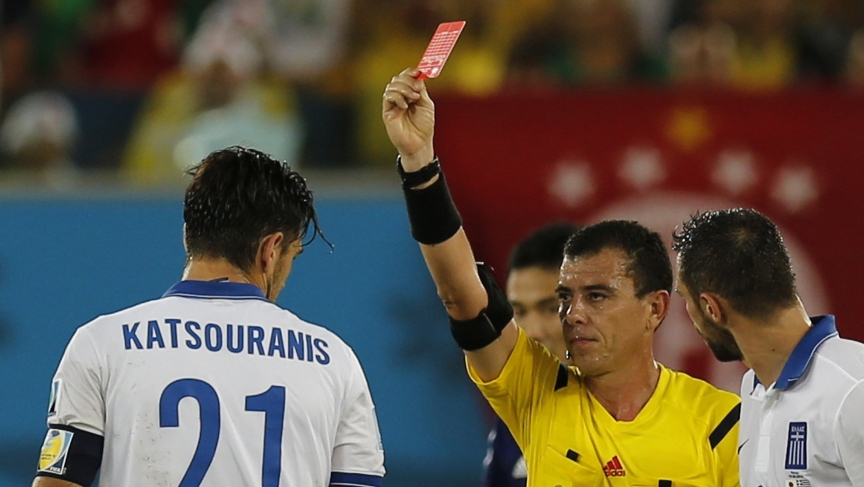WASHINGTON, DC | July 7th, 2014 - This week on BIZ+SOCIAL, we bring you the best from SSIR, Harvard Business Review, Heifer International, and more.
GLOBAL PRO BONO
Living Performance with Purpose
 In 2013 I applied to PepsiCorps, PepsiCo’s international corporate volunteering program, and was chosen to be part of an eight-person team that traveled to South Africa to work on a sustainable agriculture assignment with Heifer International South Africa, an arm of the U.S.-based nonprofit Heifer International. In 2007, PepsiCo launched Performance with Purpose, a comprehensive strategy to guide our global business. PepsiCo Chairman and CEO, Indra Nooyi, describes Performance with Purpose as the strategy to deliver great performance while doing the right things for people and communities around the world. As a company, PepsiCo is committed to work in local communities, particularly those in greatest need. Together, with Heifer International South Africa, our goal was to co-create innovative approaches to solve difficult problems like poverty and hunger. As an employee of PepsiCo’s Global Citizenship and Sustainability Department, I am responsible for advancing PepsiCo’s philanthropic programs/grants in the areas of human and environmental sustainability, overseeing our nonprofit partners who specialize in these fields. I applied to PepsiCorps because I was excited by the prospect of viewing this type of program through a different lens. Read More…
In 2013 I applied to PepsiCorps, PepsiCo’s international corporate volunteering program, and was chosen to be part of an eight-person team that traveled to South Africa to work on a sustainable agriculture assignment with Heifer International South Africa, an arm of the U.S.-based nonprofit Heifer International. In 2007, PepsiCo launched Performance with Purpose, a comprehensive strategy to guide our global business. PepsiCo Chairman and CEO, Indra Nooyi, describes Performance with Purpose as the strategy to deliver great performance while doing the right things for people and communities around the world. As a company, PepsiCo is committed to work in local communities, particularly those in greatest need. Together, with Heifer International South Africa, our goal was to co-create innovative approaches to solve difficult problems like poverty and hunger. As an employee of PepsiCo’s Global Citizenship and Sustainability Department, I am responsible for advancing PepsiCo’s philanthropic programs/grants in the areas of human and environmental sustainability, overseeing our nonprofit partners who specialize in these fields. I applied to PepsiCorps because I was excited by the prospect of viewing this type of program through a different lens. Read More…
IMPACT & INNOVATION
Disruptive Innovation: Where It Matters Most
 Jill Lepore’s recent New Yorker article, “The Disruption Machine,” has sparked a spate of commentary on outlets such as Slate, Forbes, and Salon.com. The hullabaloo has revealed vastly different perspectives on what “innovation,” “innovators,” and “disruption” mean. What these writers are not talking about is where “disruption” and “innovation” matter most—saving people’s lives. Disrupting the cycle of entrenched poverty and poor health can tip the world on its axis. And innovation has the ability to drive massive improvements in the health and well-being of children, communities, and countries. Put together, “disruptive innovation,” a term Clayton M. Christensen brought forth in his book The Innovator’s Dilemma, is more than a winner-takes-all game where one technology replaces another or where a business that does the job faster and cheaper replaces an existing, lucrative one. To me, it’s about game-changing, curve-bending opportunities to drive impact—not necessarily through technologies like Amazon’s Fire Phone, which is now caught up in this debate, but through vision, adaptation, and a die-hard commitment to collaboration. For example, almost every year, a swathe of Africa endures devastating epidemics of meningitis A. The disease can kill a child in 48 hours. Despite the size and impact of the epidemics, for years no vaccine manufacturer was willing to make a vaccine at an affordable price—per African health ministers, it needed to cost less than $0.50 per dose to be a viable option. Read More…
Jill Lepore’s recent New Yorker article, “The Disruption Machine,” has sparked a spate of commentary on outlets such as Slate, Forbes, and Salon.com. The hullabaloo has revealed vastly different perspectives on what “innovation,” “innovators,” and “disruption” mean. What these writers are not talking about is where “disruption” and “innovation” matter most—saving people’s lives. Disrupting the cycle of entrenched poverty and poor health can tip the world on its axis. And innovation has the ability to drive massive improvements in the health and well-being of children, communities, and countries. Put together, “disruptive innovation,” a term Clayton M. Christensen brought forth in his book The Innovator’s Dilemma, is more than a winner-takes-all game where one technology replaces another or where a business that does the job faster and cheaper replaces an existing, lucrative one. To me, it’s about game-changing, curve-bending opportunities to drive impact—not necessarily through technologies like Amazon’s Fire Phone, which is now caught up in this debate, but through vision, adaptation, and a die-hard commitment to collaboration. For example, almost every year, a swathe of Africa endures devastating epidemics of meningitis A. The disease can kill a child in 48 hours. Despite the size and impact of the epidemics, for years no vaccine manufacturer was willing to make a vaccine at an affordable price—per African health ministers, it needed to cost less than $0.50 per dose to be a viable option. Read More…
LEADERSHIP
Leading Across Borders Takes More than a Multicultural Background
 I recently had a phone conversation with Cosimo Turroturro, who runs a speakers’ association based in London. Simply on the basis of his name, my assumption before the call was that he was Italian. But as soon as he spoke, starting sentences with the German “ja”, it was clear from his accent that he was not. Turroturro explained, “My mother was Serbian, my father was Italian, I was born in Italy and raised largely in Germany, although I have spent most of my adult life in the UK. So you see, these cultural differences that you talk about, I don’t need to speak to anyone else in order to experience them. I have all of these challenges right inside myself.” I laughed, imagining Turroturro having breakfast alone and saying to himself in Italian, “Why do you have to be so blunt?” and responding to himself in German, “Why do you have to be so emotional?” But then I got to thinking about what it would be like to work for Turroturro in a multicultural team. It seems rather obvious that any global organization would be lucky to have a lot of Cosimos wandering their corridors. And there has been a spate of research in the last few years detailing the upside to the Cosimo profile. Read More…
I recently had a phone conversation with Cosimo Turroturro, who runs a speakers’ association based in London. Simply on the basis of his name, my assumption before the call was that he was Italian. But as soon as he spoke, starting sentences with the German “ja”, it was clear from his accent that he was not. Turroturro explained, “My mother was Serbian, my father was Italian, I was born in Italy and raised largely in Germany, although I have spent most of my adult life in the UK. So you see, these cultural differences that you talk about, I don’t need to speak to anyone else in order to experience them. I have all of these challenges right inside myself.” I laughed, imagining Turroturro having breakfast alone and saying to himself in Italian, “Why do you have to be so blunt?” and responding to himself in German, “Why do you have to be so emotional?” But then I got to thinking about what it would be like to work for Turroturro in a multicultural team. It seems rather obvious that any global organization would be lucky to have a lot of Cosimos wandering their corridors. And there has been a spate of research in the last few years detailing the upside to the Cosimo profile. Read More…
ENTERPRISE DEVELOPMENT
Applied “Womenomics”

CITIZEN DIPLOMACY
How Do 32 Teams from 32 Countries Communicate at the World Cup?
 After the Croatian team lost the opening match, the Croatian player, Vedran Corluka complained that he couldn’t understand the referee. “He was speaking Japanese,” said Corluka, “so it was real difficult to communicate with him.” This isn’t the first incident of miscommunication on the soccer field. In fact, miscommunication is what gave birth to one of the most infamous symbols of soccer. For this week’s edition of Sideways Glance, I take a look at the origins of the red card. Ever wonder what players are saying to the referee on the field? Peter Walton has heard it all. He is a former Premier League referee. But when Walton, or any FIFA referee for that matter, talks back to players it should be in English and not Japanese or any other language. FIFA referees take English courses to learn the basics of what they need to know to communicate on the field. “’Off’ for example is universal and everyone knows what ‘off’ means when you red card a player,” said Walton. Not always so. The red card was actually born out of a misunderstanding about “off” on the field. The year was 1966. The World Cup was being hosted in England and it was a tense quarter final match between host England and Argentina. The referee for the match was German. Read more…
After the Croatian team lost the opening match, the Croatian player, Vedran Corluka complained that he couldn’t understand the referee. “He was speaking Japanese,” said Corluka, “so it was real difficult to communicate with him.” This isn’t the first incident of miscommunication on the soccer field. In fact, miscommunication is what gave birth to one of the most infamous symbols of soccer. For this week’s edition of Sideways Glance, I take a look at the origins of the red card. Ever wonder what players are saying to the referee on the field? Peter Walton has heard it all. He is a former Premier League referee. But when Walton, or any FIFA referee for that matter, talks back to players it should be in English and not Japanese or any other language. FIFA referees take English courses to learn the basics of what they need to know to communicate on the field. “’Off’ for example is universal and everyone knows what ‘off’ means when you red card a player,” said Walton. Not always so. The red card was actually born out of a misunderstanding about “off” on the field. The year was 1966. The World Cup was being hosted in England and it was a tense quarter final match between host England and Argentina. The referee for the match was German. Read more…
MORE
The Secret to Successful Public-Private Partnerships
How to Move the Women in Technology Conversation to the Mainstream


